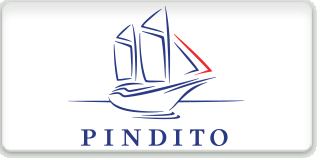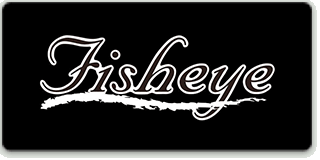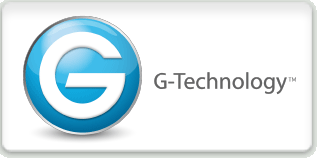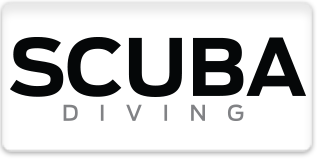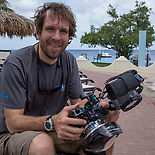GEAR TESTS: Sony Nex-6
 |
Sterling Zumbrunn Chief Technical Officer  |
My first experience with the Sony NEX series of mirrorless cameras was two years ago when I had the opportunity to shoot the original NEX-5 here in Bonaire at the at the 2011 Digital Shootout. I've since spent time with the NEX-5N and the NEX-7, and I was really excited to try the latest in this series, the NEX-6.
New Standard Hot Shoe for Hard-Wired Strobes
The NEX-6 retains some of the best features from the NEX-7, including direct dial access to both shutter speed and aperture controls and an electronic viewfinder, and it gains a new dedicated mode dial as well as a standard hot shoe instead of a proprietary one. The hot shoe in particular was one of my favorite features, as I used the empty hole found on Nauticam's NA-NEX6 housing to install a manual bulkhead with a hot shoe so I could shoot with my Sea & Sea YS-250 strobes. The NEX-7's proprietary hot shoe requires a more expensive custom part to work with electronic strobes, so the move to a standard hot shoe is certainly a welcome one.
The blank hole can also be used to install an HDMI bulkhead for either Backscatter's Wahoo or Nauticam's NA-DP4 monitor housings, which I found really useful when shooting video with the NEX-6.
NEX-6 compared to the NEX-7
The NEX-6 features better low light performance than the NEX-7, due to its lower resolution and the larger photosites on the sensor; definitely a welcome improvement for underwater photography and videography. However, I miss the NEX-7's autofocus lock button. That is probably the single biggest omission from the NEX-7 that shooters should take note of.
Stills and Video Modes
The NEX-6 is a killer stills camera, with great shot to shot performance (especially when using hard-wired strobes), and terrific resolution and dynamic range. The images look as if they were taken with an SLR, which is not surprising since the sensor is the same size as those found in entry level SLRs. However, with video, things were less rosy. I'm not a huge fan of the AVCHD codec that the NEX-6 requires for its full 1080p video capture. While efficient, it introduces unnecessary complexity for the post production workflow. In addition, I found it almost impossible to execute a custom white balance at any depth. I tried white cards, sand, rubble, pretty much everything. Lights are a critical addition to the NEX-6 for video capture, or else the footage is going to end up looking really blue.
Zeiss 12mm Touit Rectilinear Wide-Angle Lens
One of the major shortcomings of the NEX line has been the lack of good lens options. The 16mm pancake with fisheye adapater is quite sharp, but good rectilinear wide options have been lacking. One of my favorite aspects of testing the NEX-6 was having the opportunity to shoot the stunning new wide angle lens from Zeiss, their 12mm Touit. The 12mm Touit on the NEX-6's APS-C sensor is equivalent to an 18mm lens on full frame. It's remarkably sharp - the difference is visible just from viewing the image on the LCD screen. Zen Underwater was kind enough to lend us their prototype custom machined extension ring that works with their new 170mm SLR dome. This combo was incredibly crisp - one of the best rectilinear lens setups I've ever used underwater. It allows for extreme close focus, right up on the dome, and has incredibly sharp corners.
Zeiss currently also has a 50mm Macro lens in development for the NEX series, and this optic is expected to ship in 2014. Macro is another area where the lenses have been extremely lacking for the NEX lineup, so I can't wait to try the new lens when it is released. Between these two great prime lenses from Zeiss, and great cameras like the NEX-6, things are really looking bright for the NEX line.
 |
Chris Parsons Sales Manager  |
The Zeiss 12mm is a comparatively large lens relative to the NEX lineup - so large at the front edge that it won't fit in our existing port system. Fortunately, Zen Underwater came up with a solution.... an adapter with a wider barrel opening to allow the lens to work with a DSLR sized Zen DP-170 port. To make this work, the camera gets inserted into the housing without the lens, then the adapter is added, and then the lens, and finally the DP-170 port. It's more work than with typical lenses, but it turns out to be well worth the effort.
We received the adapter from the machinist about 30 minutes before heading to the airport to go to the Shootout... clearly no time for anodizing, but enough to do a quick leak check. After that, it was tossed in the gear bag and was off to Bonaire. Sterling, from Backscatter, and I took it to the Divi pool to do some quick checks, and then we took it diving.
Even before downloading the first image, I could tell this lens was going to be something special for underwater shooters. I'm a fan of rectilinear lenses for certain types of wide angle shots, i.e. sharks, people, wrecks, so on the first dive, I took it straight to the Divi dock to have a look at how it would do with the straight lines of the dock pillars. I was very pleased to see such nice straight lines with no apparent distortion. The Zen adapter had placed the dome perfectly and I was getting sharp corners once stopped down to about f/8. But the best part was the contrast... I amazed at the difference in contrast between the Zeiss 12mm and other NEX lenses - great contrast and sharpness. This lens is awesome!
The Nauticam NA-NEX6 housing was instantly comfortable and easy to use. Controls are all arranged well and easy to reach. I definitely liked having the extra control dial versus the NEX-5 series, and the mode dial as well. I used half press focus on this camera, instead of my usual thumb focus, and found to be very easy to get Nauticam's sensitive shutter button to hold focus for me. This is great for point and shoot style photography and made the system really easy to use. I used Inon Z-240s and TTL via fiber optic cables; Sterling opted for shooting Sea & Sea YS-250s via sync cables for some of his dives with it. The NEX-6 is the first NEX camera with a standard style hot shoe, and Nauticam provides a bulkhead so that sync cables can be used for those that want them.
Sterling and I ended up shooting the NEX-6 a lot more than we had planned. By itself, the NEX-6 is a great little camera, very capable, and adds a lot of nice features over the NEX-5. But teamed with the new Zeiss 12mm, the NEX-6 quickly became a favorite. The adapter/dome combination for the Zeiss 12mm will be available soon from Zen Underwater.
READ MORE GEAR TESTS:







